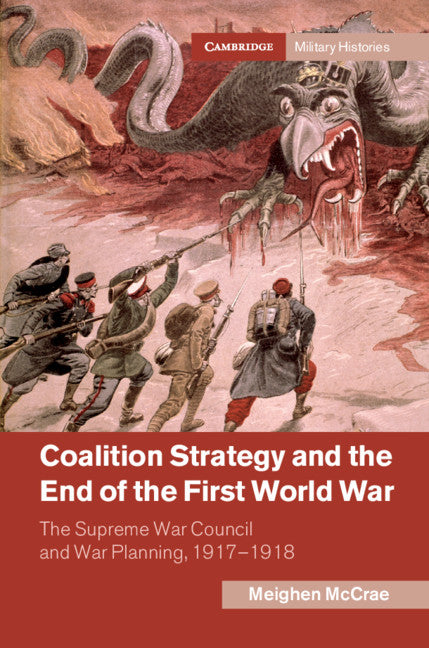Freshly Printed - allow 8 days lead
Couldn't load pickup availability
Coalition Strategy and the End of the First World War
The Supreme War Council and War Planning, 1917–1918
This exploration of Allied war plans for 1918–1919 uncovers how the Supreme War Council became a successful mechanism for coalition war.
Meighen McCrae (Author)
9781108475303, Cambridge University Press
Hardback, published 24 January 2019
292 pages, 1 b/w illus. 4 maps 7 tables
23.5 x 16 x 2 cm, 0.56 kg
'… McCrae … takes her doctorate forward into an important and detailed study of the development of coalition strategy in 1918-19 and notably in terms of the workings of the Supreme War Council …' Jeremy Black, History Australia
When the Germans requested an armistice in October 1918, it was a shock to the Allied political and military leadership. They had been expecting, and planning for, the war to continue into 1919, the year they hoped to achieve a complete military victory over the Central Powers. Meighen McCrae illuminates how, throughout this planning process, the Supreme War Council evolved to become the predominant mechanism for coalition war-making. She analyses the Council's role in the formulation of an Allied strategy for 1918–1919 across the various theatres of war and compares the perspectives of the British, French, Americans and Italians. In doing so we learn how, in an early example of modern alliance warfare, the Supreme War Council had to coordinate national needs with coalition ones.
Introduction
1. The Supreme War Council
2. Offensive action in the Balkans?
3. Eliminate the Ottoman Empire?
4. Maintaining the Italians – the role of the Italian theatre in creating an Allied strategy
5. The role of the Franco-Belgian front in determining an Allied policy for 1919
6. Building a bridge to France: the role of resources in creating an Allied strategy for 1919
Conclusions.
Subject Areas: Military history [HBW], British & Irish history [HBJD1], European history [HBJD]


